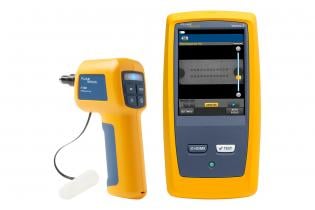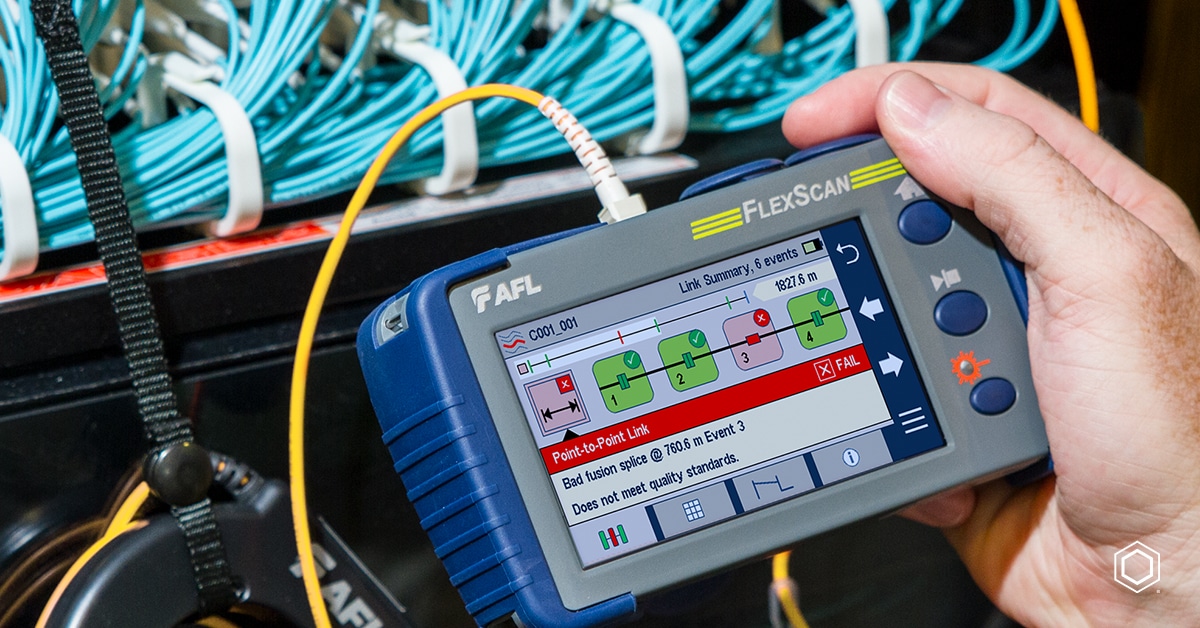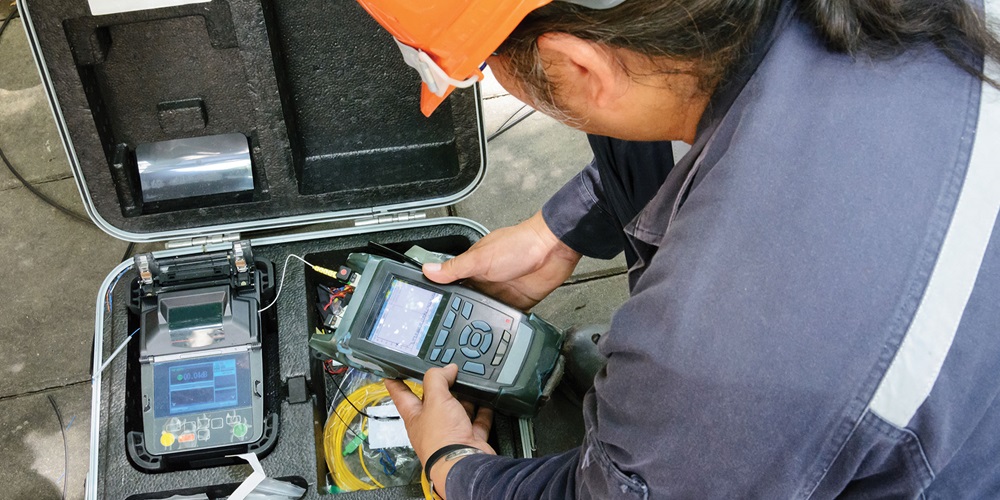Discover the Value of Optical Fiber Testing in Modern Telecom
In the realm of modern telecommunications, the value of optical fibre screening can not be overemphasized, as it works as the backbone for making certain network reliability and efficiency. By implementing routine screening protocols, operators can preemptively identify possible issues such as signal deterioration, hence securing against disturbances that can prove pricey. Advanced techniques like Optical Time-Domain Reflectometry play a pivotal duty in this procedure, yet several might overlook the more comprehensive implications of these techniques. What are the details advantages that routine screening offers, and exactly how might it form the future landscape of telecommunications?

Understanding Optical Fibre Testing
Optical fibre testing is an essential procedure in telecommunications that ensures the honesty and performance of fibre optic networks. This screening incorporates a series of treatments designed to evaluate the physical and practical features of optical fibres - optical fibre diameter analyser. Secret criteria examined consist of optical power loss, data transfer ability, and mistake area, which are crucial for keeping top quality interaction links
The testing process generally includes the usage of specific equipment such as Optical Time-Domain Reflectometers (OTDR) and Optical Power Meters. OTDRs are employed to recognize and define faults, mates, and adapters within the fibre, while power meters determine the transmitted light signal strength to identify effectiveness.
Moreover, testing is performed at numerous phases, including throughout installation, maintenance, and troubleshooting, to ensure that the network satisfies industry requirements and functional requirements. Compliance with requirements established by organizations like the International Telecommunication Union (ITU) and the Telecommunications Market Organization (TIA) is critical.
Advantages of Normal Examining
Normal screening of optical fibres returns numerous benefits that considerably improve network integrity and efficiency. Among the primary benefits is the very early detection of possible problems, such as breaks or degradation in the fiber, which can result in expensive downtime if left unaddressed (ofda). By recognizing these problems proactively, telecommunications carriers can lessen service interruptions and make sure consistent connection for their consumers
Furthermore, regular testing helps to maintain the integrity of signal top quality. As optical fibers age, their performance can be impacted by aspects such as ecological problems and physical tension. Regular evaluations enable the monitoring of signal loss and total transmission efficacy, ensuring that the network operates at optimal degrees.
One more substantial benefit is compliance with market criteria. Normal testing sustains adherence to regulative demands, thereby minimizing legal and monetary threats linked with non-compliance. Moreover, it enhances the overall lifespan of the fibre infrastructure by assisting in timely repair and maintenance.

Typical Examining Methods
Testing optical fibres employs numerous methods to make certain the honesty and efficiency of telecommunications networks. Among one of the most typical methods is Optical Time Domain Reflectometry (OTDR), which analyzes the entire size of the fiber by sending out a pulse of light and gauging the reflections triggered by imperfections or breaks. This approach offers in-depth info about the area and severity of faults.
An additional common technique is the usage of Optical Power Meters, which gauge the quantity of light transmitted with the fiber. This technique assists identify the loss of signal toughness, making certain that it meets industry requirements. In Addition, Visual Mistake Locators (VFL) are utilized to identify breaks or severe bends in the fiber by projecting a visible laser light right into the cord.
Insertion loss screening is also important, as it measures the loss of signal power arising from connections and interlaces within the network. In addition, the usage of Polarization Setting Dispersion (PMD) testing analyzes the impact of fibre attributes on signal honesty.
Each of these approaches plays a crucial duty in keeping the efficiency and reliability of optical fibre networks, inevitably adding to seamless telecommunications operations.
Influence on Network Efficiency
The stability and efficiency of optical fiber networks directly affect general network performance. In modern telecoms, the effectiveness of data transmission counts greatly on the top quality of the optical fibers used. Any type of destruction look at this website in the fiber's problem-- whether because of physical damage, contamination, or too much bending-- can result in boosted depletion and signal loss, dramatically influencing information integrity and rate.
Routine optical fiber screening is important to determine and rectify possible concerns prior to they materialize as network failings or stagnations. Methods such as Optical Time Domain Name Reflectometry (OTDR) and insertion loss testing allow technicians to measure the efficiency of fiber web links properly. These examinations not just review the physical problem of the fibers however likewise make sure conformity with industry requirements, thus securing the network's dependability.
In addition, a properly maintained optical fiber network adds to reduced operational prices and boosted client satisfaction, as end-users experience fewer disturbances and greater data prices. Inevitably, the emphasis on extensive optical fiber screening methods acts as a keystone for sustaining durable telecommunications facilities, making sure that provider can fulfill the growing demands for bandwidth and connectivity in today's electronic age.
Future Patterns in Checking
As we look ahead, advancements in innovation are positioned to improve optical fiber screening in telecommunications. The increase of automation and fabricated intelligence (AI) is anticipated to boost the effectiveness and precision of testing processes. Automated screening systems can carry out extensive evaluations with marginal human intervention, substantially reducing the potential for mistakes and accelerating time-to-deployment.
Moreover, the assimilation of artificial intelligence algorithms will allow predictive maintenance, enabling network service providers to predict prospective concerns check these guys out prior to they intensify into failures. This aggressive technique not just boosts network reliability however also maximizes functional costs.
Another emerging fad is the growth of portable testing devices that supply real-time evaluation - robotic vision. These tools will certainly encourage service technicians to do on-site diagnostics rapidly, assisting in quicker resolutions and improving service high quality
The growth of 5G networks further requires the development of testing techniques. As data transfer demands raise, typical screening techniques may no more are adequate. Innovative solutions such as optical time-domain reflectometry (OTDR) and progressed spooky evaluation will certainly come to be crucial in ensuring the honesty and great post to read efficiency of high-speed links.

Verdict
Finally, optical fiber screening is necessary for ensuring the stability and integrity of modern-day telecommunications networks. Normal testing practices not just assist recognize possible concerns such as signal loss and faults but likewise add to boosted network efficiency and client complete satisfaction. As the demand for smooth connectivity remains to expand, the adoption of innovative screening methods will play a crucial function in preserving top notch network standards and supporting the evolving landscape of telecommunications.
Comments on “A advanced optical fibre diameter analyser supports fibre manufacturing.”